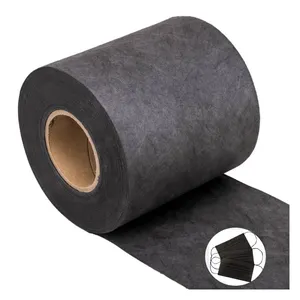
Woven Geotextiles Fabric For Road Construction Woven Geotextile PP Nonwoven Geotextile Black Non Woven Fabric Landscape Cloth


Manufacturer Direct Wholesale Bfe99 Melt-Blown Non Woven Fabric Pp Spunbond Non-Woven Meltblown Nonwoven Fabric
















Spunlace nonwoven fabric scrap is a versatile material widely recognized for its diverse applications across various industries. This fabric is produced through a sophisticated process that entangles fibers to create a highly absorbent and durable material. The spunlace method ensures the fabric's integrity without compromising its softness, making it suitable for a multitude of uses.
The spunlace nonwoven category encompasses a variety of materials, including but not limited to, non-woven polypropylene, non-woven polyester fabric, and non-woven filter fabric. Each type possesses unique characteristics tailored to specific applications, ranging from medical disposables to consumer goods. The choice of fiber, whether natural or synthetic, impacts the fabric's properties such as strength, texture, and biodegradability.
The application of spunlace nonwoven fabric scrap is extensive. In the medical field, it is transformed into disposable clothing, such as hospital gowns, which require a balance of comfort and hygiene. The home care industry utilizes this fabric for products like wet wipes, benefiting from its gentle yet effective cleaning properties. Moreover, the eco-friendly nature of certain spunlace materials makes them ideal for creating biodegradable shopping bags, aligning with sustainability goals.
Spunlace nonwoven fabric is distinguished by its porous nature, which is essential for applications that require breathability and filtration. This feature is particularly beneficial in the production of diaper covers and bag linings, where air flow and moisture management are crucial. Additionally, the use of spunlace nonwoven in outdoor geotextile fabric highlights its durability and effectiveness in soil stabilization and water drainage without harming the surrounding ecosystem.
The environmental advantages of spunlace nonwoven fabric are noteworthy. When made from natural fibers, the fabric presents an eco-friendly alternative to traditional plastic bags, contributing to the reduction of plastic waste. Its biodegradable qualities also ensure that products like non-woven paper wet wipes have a minimal environmental footprint, decomposing naturally over time.
The array of spunlace nonwoven fabrics available caters to a broad spectrum of needs and industries. From thermal insulation in thermal blankets to everyday items like shopping bags and wet wipes, spunlace nonwoven fabric scrap stands out for its adaptability, efficiency, and environmental benefits. The material's multifaceted nature not only meets the demands of various applications but also supports sustainability efforts, making it a valuable addition to any product line.